Xiaomi 11T Pro Review – Good Value for Money | Xiaomi 11T Pro vs OnePlus 9RT In-Depth Comparison

Let’s dive straight into it: This is possibly the most requested review across Trakin Tech platform!
It is finally here – the Xiaomi 11T Pro review and OnePlus 9RT comparison you’ve been waiting for.
Here are the first impressions and in-depth review, and the big comparison!
Contents
Battery
To start off, yes, the 11T Pro bundles a 120W charger with the phone, but it takes way more than 17 minutes to fully charge the 5000mAh battery. Every single time I tried charging the phone from 1% to 100%, it took anywhere between 30 minutes to 35 minutes. In fact, it takes only 29 minutes to fully charge the OnePlus 9RT’s 4500mAh internal battery with its 65W charger. Really, the 120W charger doesn’t make a difference in real world testing. If you want to achieve the 17 minute time, you need to follow these steps:
• Airplane mode: On
• Location: Off
• Screen off while charging
• Clear all Apps from running in background
• Starting ambient temperature <25 degrees
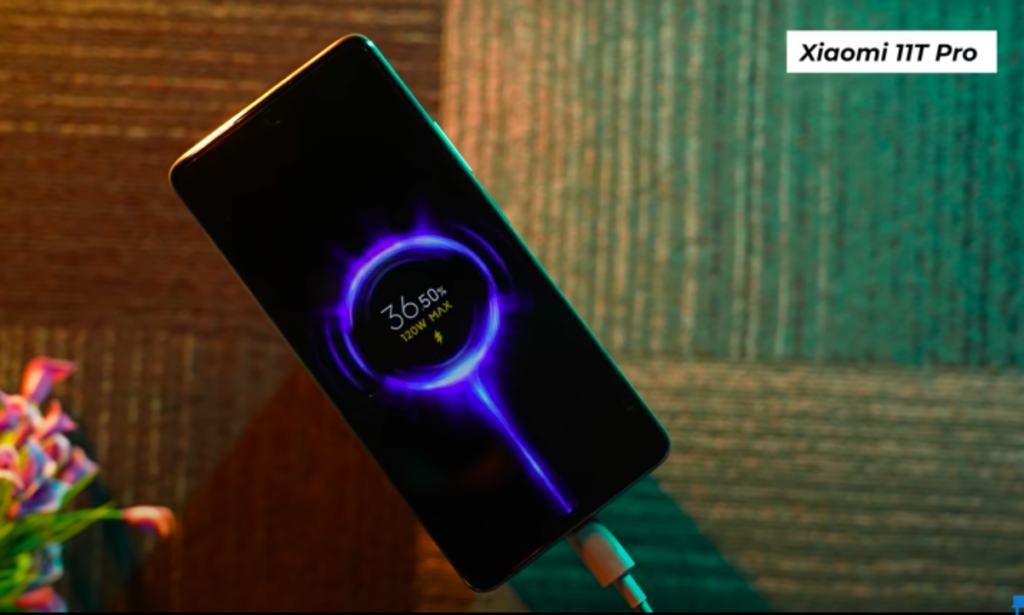
That said, the 11T Pro’s battery life has been great in my experience. I constantly got a day’s worth of usage, and anywhere between 5hrs 30minutes and 7hrs of SoT. I believe it can last slightly longer compared to the 9RT. And, if you ask me, I will wait forever and for always (insert forever and for always song) for you to hit that subscribe button. It motivates me to make more cool tech videos for you folks.
Performance
Both, the 11T Pro and the 9RT, have a Snapdragon 888 SoC inside. And, we have the 12GB/256GB variant of both the phones. I ran our suite of benchmarks and the scores are nearly identical for AnTuTu and Geekbench. But, what matters is sustained performance and to check if the phones heat up. And, a 30 minute CPU throttle test clearly indicates that the Xiaomi 11T Pro does throttle way more than the OnePlus 9RT. The graph doesn’t look very good.
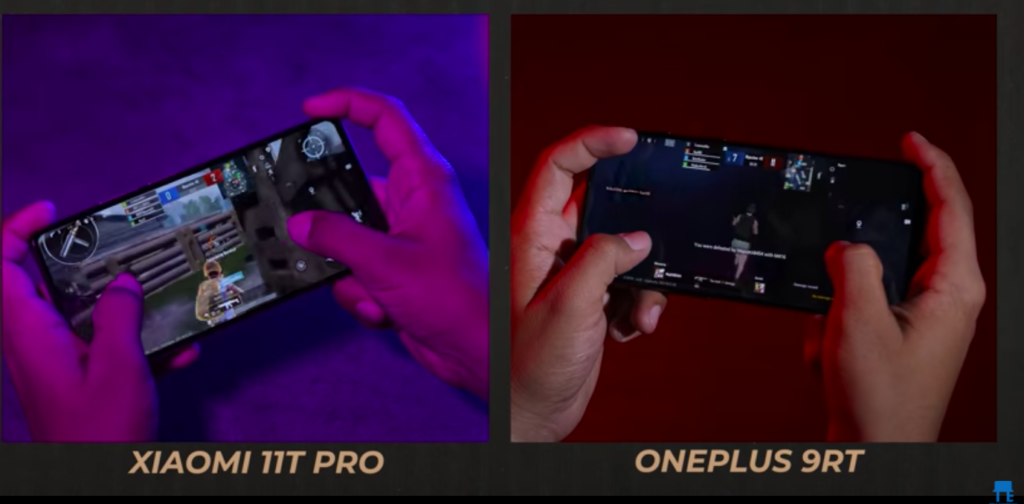
Moreover, I ran 3DMark Wild Life Stress Test thrice and every time the Xiaomi 11T Pro shut it down with this message (show message on screen). The temperature peaked to 45-degrees about halfway into the test. The 9RT’s improved vapour cooling solution ensures the phone didn’t cross 43 degrees for the entire duration of the test. And, I really find this surprising because the Mi 11 Ultra was very well tuned. Hope Xiaomi can fix this soon.
That said, in COD: Mobile, both the phones offer the max frame rates and max graphics, and run butter-y smooth throughout without any frame drops. The throttling will affect the 11T Pro only when you game continuously for over an hour and stress the SoC. Otherwise it is fine.
Camera

For a lot of folks, the comparison between the 9RT and the 11T Pro boils down to how the camera setups on these two phones compare. Let’s dive in.
- The 108MP primary camera on the 11T Pro does capture more details in its 12MP pixel-binned sample image. If you look at the 100% crop of the building in this image, you will notice that the 11T Pro has managed to capture the finer texture on the walls whereas the 9RT has glossed all over it. Also, Xiaomi’s algorithm goes for enhanced contrast, which ends up further accentuating the sharp lines with a thicker outline. Therefore, making details stand out even further. However, if you notice in the darker shadow regions, there is still a lot of noise and over the years of using the 108MP sensor, Xiaomi hasn’t managed to fix it yet.
- As for the colour reproduction, the 9RT tends to paint every image with a more colourful canvas than the 11T Pro. You can see the difference here in the way the 9RT has reproduced the Orange and the Green here. The second sample just further augments my theory that the 9RT over-saturates to a very high degree whereas the 11T Pro tries to underplay it. Honestly, both aren’t very accurate representations of the scene so some post capture edit will be essential.
- When it comes to High Dynamic Range captures, both the algorithms fail to do a good job. While the 11T Pro’s highlights are blown out, the 9RT cannot retrieve more details from the shadows. Samsung and Vivo phones are better at HDR.
- However, when it comes to macro photography, Xiaomi’s 5MP camera with 50mm lens telemacro setup is the shizz! I mean, the 9RT should just bow down to the master. Just look at the difference here!
- While the 9RT has an 16MP ultrawide angle camera and a 123-degree wider field of view, the 11T Pro’s, 8MP camera offers a sharper focus with crisper details. Especially around the center of the image. Every time I shot with the 9RT’s ultrawide, I ended up with a shot with soft focus. That said, the 9RT has a slightly better dynamic range performance. Honestly, I can’t really pick between the two here but I was pleasantly surprised at the sharper 11T Pro ultrawide sample.
- Moving on, I prefer the 11T Pro for shots of people (human subject). I noticed crisper textures on the face and the T-shirt, more dynamics on the face, and a nicer natural bokeh owing to the large sensor. Even in the previous comparison with the S21 FE, I wasn’t very happy with the 9RT’s extremely soft and flat image.
- Although, in Portrait shots, the 11T Pro messes up. You can see how the edge detection around the hair and the space between the hands is not very clearly outlined by the algorithm and the drop off happens much sooner. This is surprising because Xiaomi’s algorithm is generally good with portraits.
- In selfies, the 11T Pro’s sample looks better here with a close to accurate colour reproduction and better details. And in selfie portraits, the 11T Pro redeems itself and does a better job of the edge detection. In fact, even low light selfies, with or without Night mode are better on the 11T Pro, hands down. I hate that the 9RT tends to turn my face into a bright moon with Night Mode on.
- In low light shots using the primary camera, the 108MP camera on the 11T Pro is more sensitive to light by default. The image is brighter here compared to the 9RT. The 9RT does catch up with Night Mode on, but still the 11T Pro is better. The second sample only further proves that the 11T Pro is sharper in low light shots with Night Mode on. You can notice the finer details on the cushions and the ottoman in front of it.
- However, in low light shots using the ultrawide angle cameras, the 9RT does offer slightly better details with Night Mode turned on.
- Both the phones offer 4K 60fps video recording. However, the capture bit rate is higher on the 9RT meaning you get a larger file size and slightly better details. But, I couldn’t really notice any difference in real life. Thanks to OIS, you won’t notice any jerkiness while panning on the 9RT, which is visible on the 11T Pro. But, the 11T Pro definitely offers fantastic environmental noise cancellation and therefore the sound recording is really, really good. In fact, you can control the mics to your preference, and use a wired earphone for monitoring live audio too.
- Xiaomi also offers 1080p 60fps video recording with EIS on the front camera. The 9RT tops out at 1080p 30fps and doesn’t offer any stabilisation either. Plus, the sound recording, again, is way better on the 11T Pro. I’d easily pick the 11T Pro for recording videos using the front camera.
- That’s not it though, the 11T Pro also offers 8K 30fps video recording which the 9RT does not. And, it offers the capability to shoot HDR10+ videos, in 4K 60fps no less, which further enhances the dynamic range performance of videos. Also, let’s not forget the various Movie Effects and Vlog Mode. These creative modes are absolutely great for immediate social media sharing. I quite like the kind of final output that you can get here. I do agree that Xiaomi makes it more fun to shoot videos using the 11T Pro.
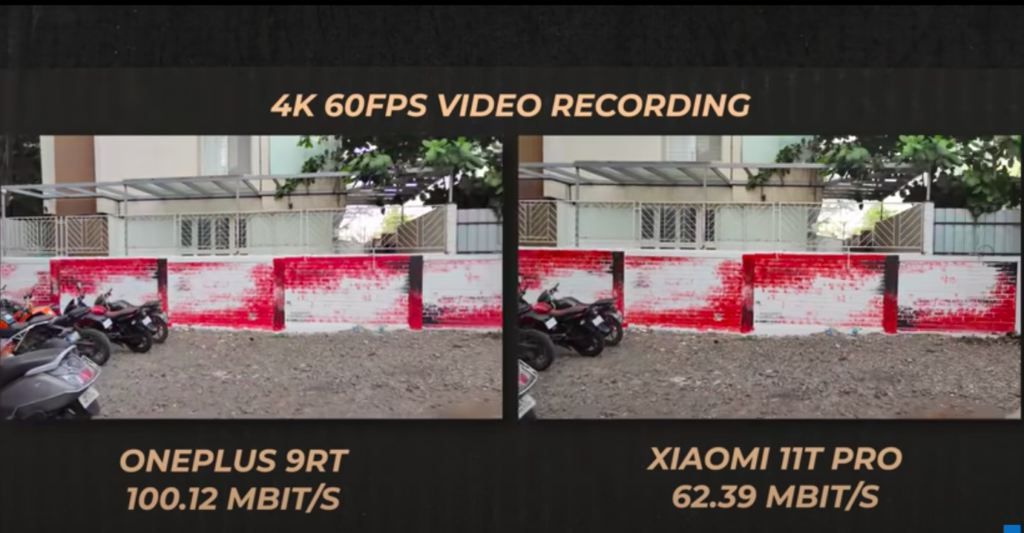
To sum it up, our tests indicate that, for the most part, the 11T Pro offers a better camera performance compared to the 9RT and has more features too. Although, this conclusion is only relative to these phones and I wouldn’t pick either as my camera setup of choice. I’d either go for any iQOO/vivo/Samsung phone under Rs 40,000 over the 11T Pro and the 9RT.
Software
Moving on to the software, it doesn’t bode well for either Xiaomi or OnePlus that their 2022 phones ship with Android 11 out of the box. On the 11T Pro, you get MIUI 12.5.2 and it is feature rich as usual. I am not going into it but, after a long time, I faced a few bugs. Firstly, the app drawer froze on me randomly. But, it happened only once so I am not too worried about it. Although, what was more annoying was, during calls, the proximity sensor didn’t work properly. This meant that during a 40 minute call with my mom, the phone would keep muting my mic as my cheek grazed on it. Why? Because the display doesn’t go off.

See, it is not like Oxygen OS on the OnePlus 9RT doesn’t have bugs but there’s nothing that breaks the experience this way. Regardless, if I had to choose between the compromised software experience on either of the two phones, I’d go with Oxygen OS on the 9RT.
Design
The one thing I am not a fan of is the 11T Pro’s design. It is a subjective take but I think the 9T Pro is a better looking phone. That said, the 11T Pro does offer IP53 rating, which the OnePlus 9T Pro does not. Any IP rating is a welcome addition in this price range. Furthermore, there’s Gorilla Glass Victus protection on the 11T Pro’s display. It is only Gorilla Glass 5 on the OnePlus 9RT.
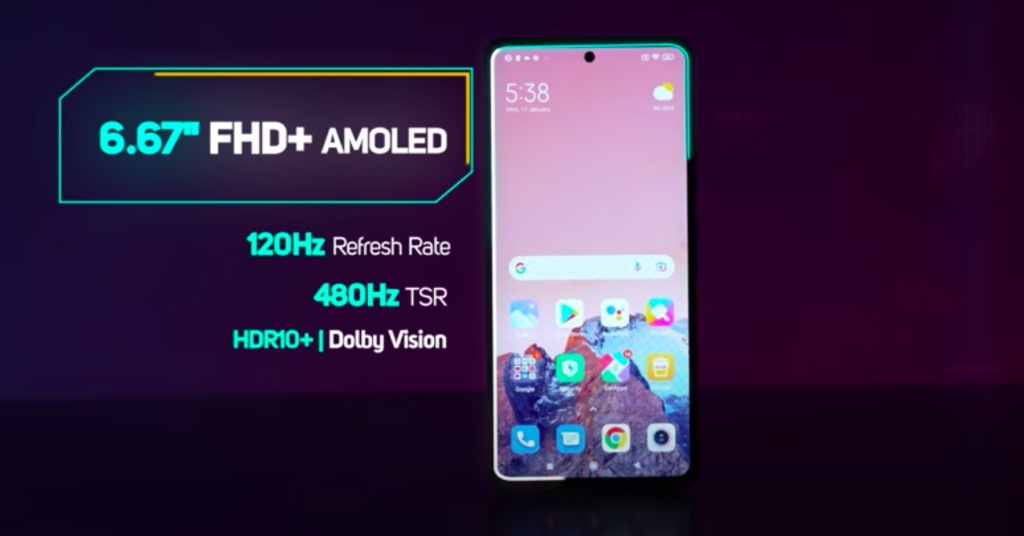
Plus, you get proper stereo speakers on the 11T Pro; tuned by Harman Kardon, no less. It sounds absolutely phenomenal and the 9RT stands no chance here. Just listen to it for yourself.
Also, I’d like to highlight that either phone doesn’t offer USB 3.0 speeds on the Type-C port. And of course, OnePlus fans will highlight the fact that the 9RT has the famous alert slider, which I absolutely love. By the way, the 11T Pro has a fingerprint scanner on the side power button and the 9RT has an in-display one. Both work fantastically well. No issues.
Display
Now, couple that with the nice and punchy 10-bit AMOLED display with support for Dolby Vision, you get an unmatched multimedia experience. I noticed that the 11T Pro displays more realistic colours while playing back Dolby Vision videos on Netflix. However, in a 9% brightness window you can clearly see that our lux meter captures a higher lux level on the 9RT vs the 11T Pro. This is a tiny difference which is not too much of an issue in daily usage, though.
The 11T Pro does offer a slightly better default touch sampling rate of 480Hz over the 9RT’s 300Hz TSR. While the difference does look big on paper, I really couldn’t actually feel it in real life. Both are equally matched. Maybe because the OnePlus 9RT jumps to 600Hz while gaming. In any case, it does help when playing games like Call of Duty: Mobile, where twitch responses matter.
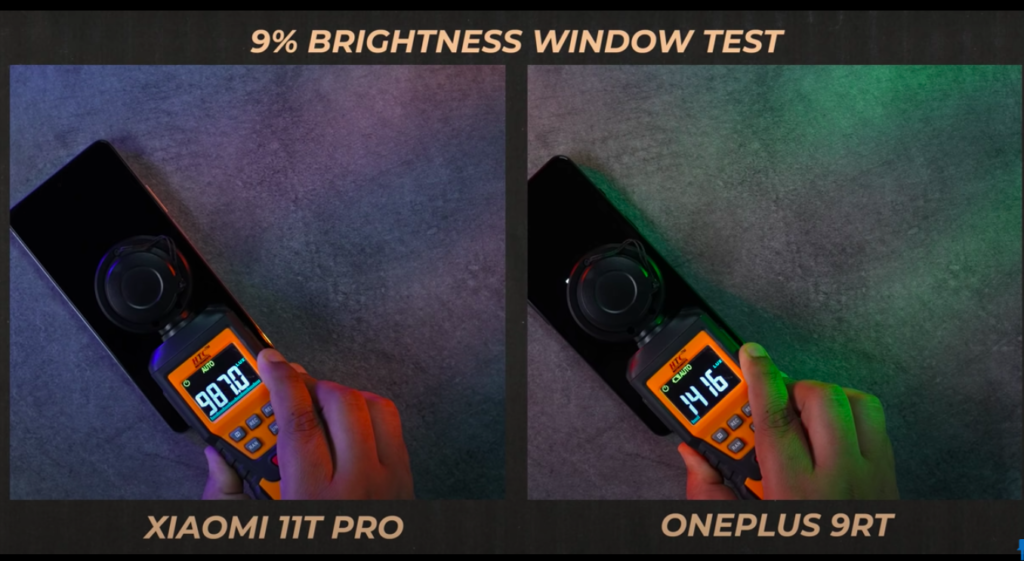
When you look at it overall, the 11T Pro has a slightly better display of the two phones.
Conclusion
The Xiaomi 11T Pro’s biggest advantage is its pricing. The base 8/128GB variant undercuts the same base variant of the 9RT by Rs 3,000, even without any bank discounts.
With a bank discount the difference becomes a whopping Rs 4,000. And, for that difference you get a better display, a better and a more versatile set of cameras, fantastic speakers, and a slightly better battery life. But yes, if you want a better looking phone that runs cool and offers a stable performance, the 9RT is clearly the choice for you. I’d suggest gamers to spend more and get the 9RT instead.
While that was my take on the Xiaomi 11T Pro and the OnePlus 9RT, my intuition says that the iQOO 9 series will blow both these phones out of the water. Well, let’s wait and watch.
Until then Keep Trakin and Stay Safe.

Comments are closed, but trackbacks and pingbacks are open.